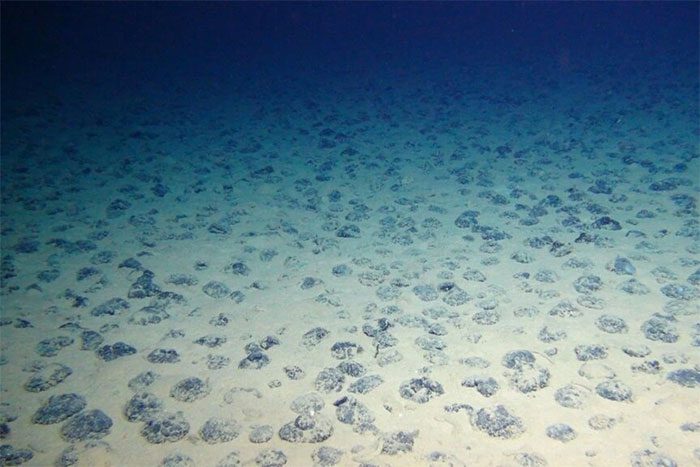Scientists have discovered “black oxygen” lurking in the depths of the Pacific Ocean, far removed from any sources of light. They have revealed its peculiar production method.
A group of scientists has identified “black oxygen”, which has left them astonished. This oxygen is not produced by living organisms, but rather from the “pebbles” lining the ocean floor.
Black Oxygen is Produced at a Depth of 4,000 Meters
The research team from the Scottish Association for Marine Science (SAMS) stated: “We found that oxygen is produced entirely in the dark at the bottom of the Pacific Ocean.”
This dark oxygen challenges the current scientific consensus on how oxygen is produced.
“Until now, we thought that the deep sea was merely a place where oxygen resides, and that all the oxygen found here originated from photosynthesis occurring in the ocean above and on land. What we are demonstrating is that the deep sea has the capability to generate its own oxygen“, said scientist Andrew Sweetman (SAMS).

Black oxygen is produced at a depth of 4,000 meters below the ocean surface thanks to charged pebbles. (Photo: Numerama).
This black oxygen gas is generated at a depth of 4,000 meters below the ocean surface, far from any light sources.
Charged Pebbles
In an experiment conducted aboard a research vessel, scientists discovered this black oxygen. Specifically, they collected seabed samples from the Clipperton Fracture Zone – a large deforming area stretching over 5,000 km in the Pacific Ocean.
This deep area is fascinating because its surface is filled with “pebble” minerals the size of potatoes. These are sources of copper, nickel, cobalt, iron, or manganese – metals widely used in everyday life, such as in the production of electric vehicle batteries.
During the sampling process, scientists found that these pebbles had a charge of up to 0.95V.
“With the high voltage on the surface of the pebbles, we hypothesize that the electrolysis of seawater may contribute to the generation of this oxygen in the dark,” the research team explained.
In other words, when the pebbles gather together, they can generate enough electricity to initiate the electrolysis of seawater into hydrogen and oxygen, creating this unique “black oxygen.”
Connection to the Origin of Life on Earth?
According to SAMS, we should rethink our understanding of the origins of life on Earth based on this research.
We often believe that cyanobacteria were the first organisms to perform photosynthesis 2.4 billion years ago, helping to release large amounts of oxygen and enabling the emergence of more complex life forms.
However, if there is another source capable of producing oxygen, it may be time for the scientific community to reevaluate this scenario.
The group of scientists is calling for further research into the production of dark oxygen on the ocean floor, to explore whether this phenomenon could be related to the “oxidation processes of Earth“.


















































